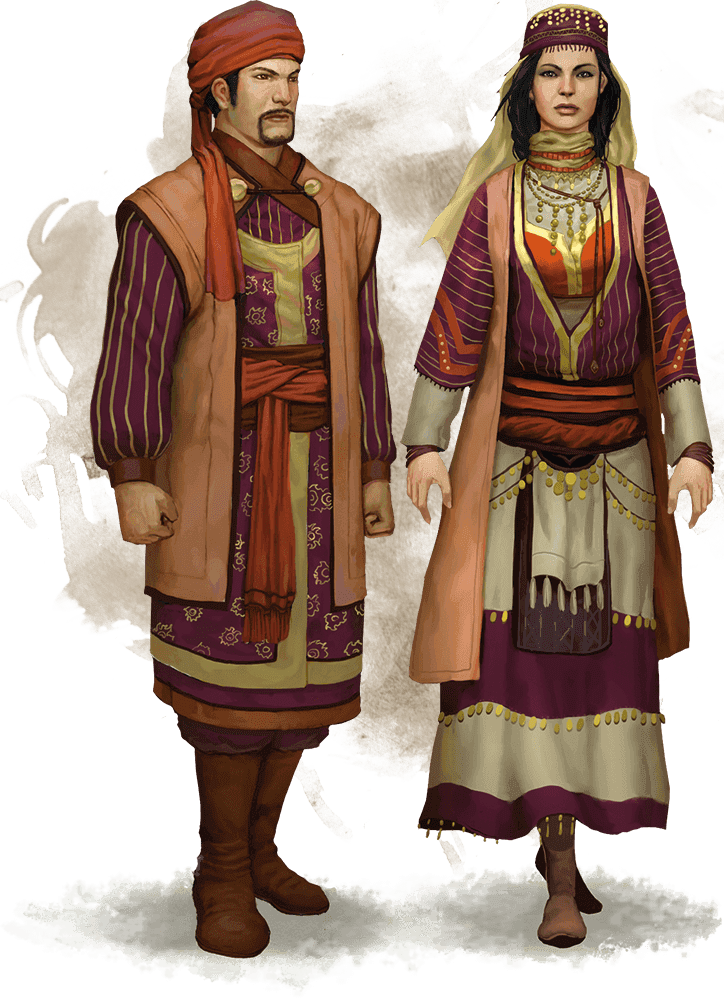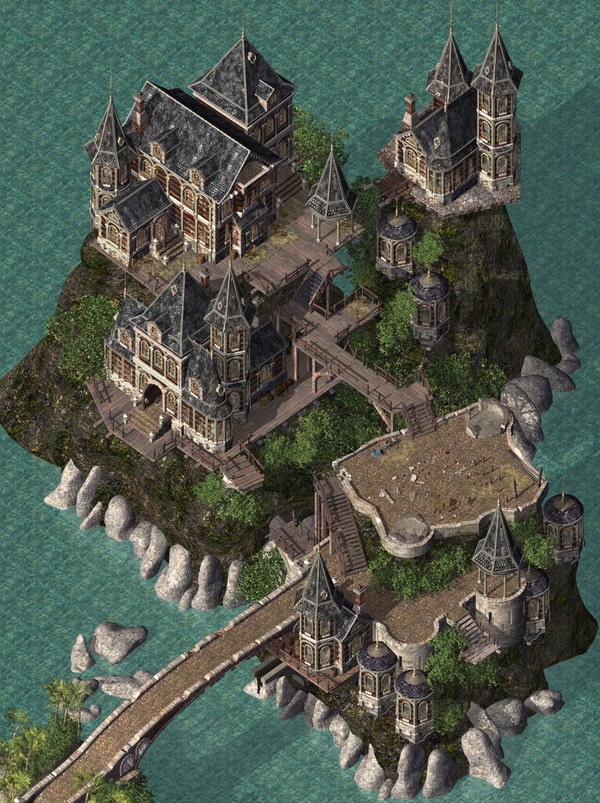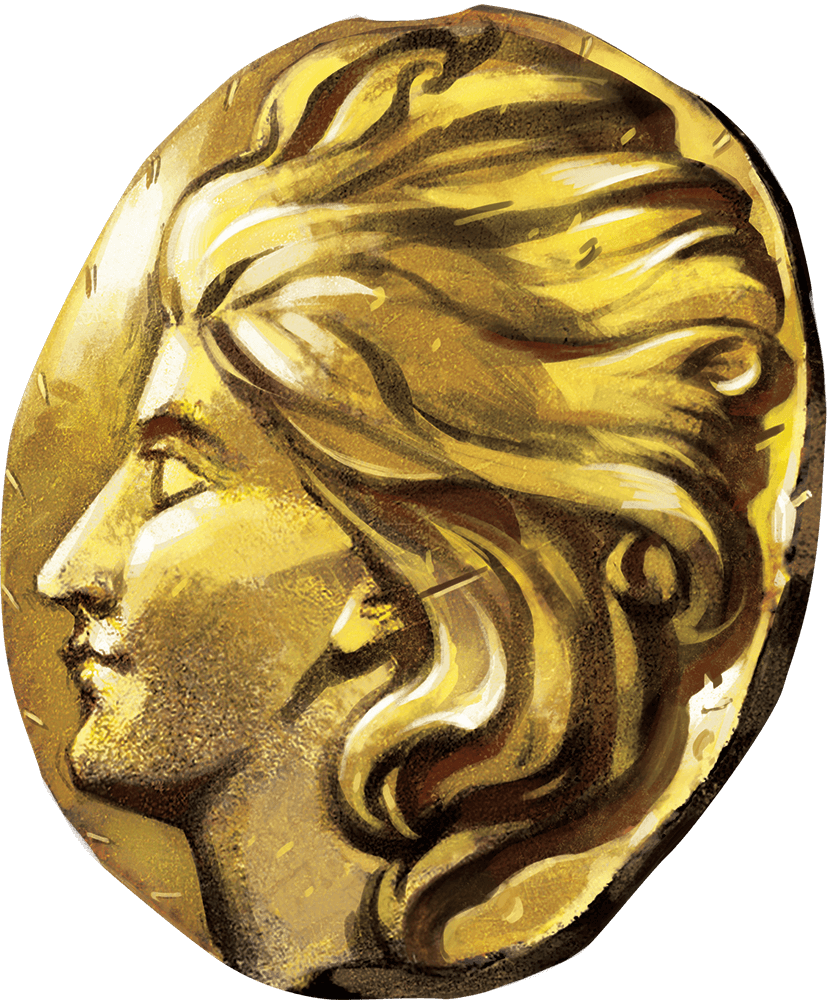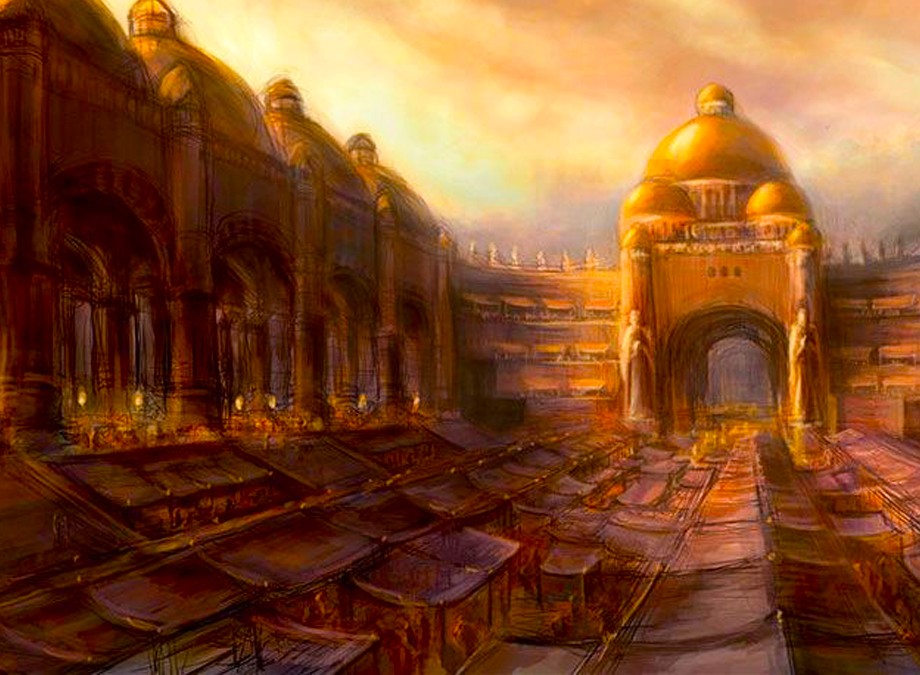It’s easy to fall under the impression that the Forgotten Realms consist entirely of city states in the modern setting. As the Sword Coast seemingly hosts the vast majority of campaigns, many adventurers may go their entire lives seeing only the scattered cities of the coast.
But there is so, so much more to the Forgotten Realms than just locales like Waterdeep or Baldur’s Gate. While empires such as Netheril may be but distant memories today, there are still many greater nations in the land of Faerun. Kingdoms and empires and republics that contain vast riches and rich cultures with many more cities than that famed Sword Coast.
And one is not so far away from perhaps the most famous of all those city states.
Welcome to Lore-Win, the Dungeons and Dragons lore series. I, as always, am your humble Loremaster, Sokar. Today, we’ll leave the comforts of Baldur’s Gate and travel down south, away from the familiar region that hosts much of the current catalog of adventures and into the Merchant’s Domain. Otherwise known as the nation of Amn.
A Brief History of Amn’s Founding
Long, long ago, when the elves were emigrating from the Feywild, humans started to settle the lands where Amn now stands.
As the elves created their own nations, humans, and giants came to the forests of one elven realm named Keltormir. The giants sought to establish their own domain, and took to the forests to fell trees and fuel their industry. This, however, provoked dragons who lived in the region.
The dragons cut a swathe through the forests in their battle with the giants. And once the smoke had settled, humans settled in the newly formed clearings created both by the giants’ industry, and the dragons’ breath.
As time went on, the region became known as the Lake Lands among the Mountains, or the Calishar Emirates. The region became settled with a few villages, hunting lodges, and garrisons that lodged immigrants from the south western lands of Calimshan, along with local humans.
Between the years 100 DR and 212 DR, three cities were founded in the region, known then as the Emirate of Amin. These cities were Crimmor, Murann, and the future capital of Amn, Athkatla. The founding of these cities prompted a great emigration of Calishites (the name for inhabitants of Calimshan) to the area.
At the time, most of south western Faerun was ruled over by the Shoon Imperium, the most well documented of Calimshan’s royal dynasties. The Imperium later forced the halfling inhabitants of a region known as the Purple Hills from their home. In 227 DR, a hundred years after Athkatla’s founding, these halflings founded their own nation, Meiritin.
Less than a century after Meiritin’s founding, another nation was born. In the year 300 DR, a theocracy named Minsorran. In 361 DR, the kingdom of Valashar was created. But this nation lasted only 15 years, and it was ultimately destroyed in a war with the nation of Cormyr.
In 390 DR, another nation was born in the region. This was Myth Lharast, a nation founded out of frustration from a pantheistic religion and wanted a “purer” religion formed around the worship of Selune.
Which meant that when the Shoon Imperium fell in a war with Tethyr, the region that would become Amn was filled with small countries and independent city-states. It was a realm ripe for unification by a warlord with aspirations

A representation of Calimshan's inhabitants.
Source: Sword Coast Adventurer's Guide (5e)
And at the time of its collapse, the Shoon Imperium had just such a candidate in the region. The Emirate of Amin had a single general who was native to the region, Esmel Torlath. He launched a campaign to take control of the region and proved to be successful.
Esmel managed to conquer the western half of the Emirate of Amin. He named himself Esmel the First, and named his new Kingdom, Amn.
Life in Amn
Things have changed in Amn since it was established as a kingdom, however. After three separate dynasties held the Amnian throne, the monarchy was replaced with a council of rulers. At first, this was the Council of Six, but in more recent times one seat was taken from it, leaving it the Council of Five.
The previous ruling Council of Six was made up of the anonymous heads of influential merchant houses. This council was focused on keeping the peace within Amn, maintaining a strong ruling body, and most importantly, keeping the trade flowing. Their anonymity was put in place to protect the members of the Council of Six from bribery, manipulation, and assassination. This anonymity was also protected by law, with councilors to be spoken of only by title. If you did share the name of a councilor, torture and death were the punishments.
Like their predecessors, the Council of Five also seeks to keep trade flowing through Amn. However, while before Amn made some gestures at not being an oligarchy, the Council of Five have done away with these. The five heads of the greatest noble houses rule openly now. Though wealthy merchants still hold great power.
The demographics of Amn are primarily human, with a sizable population of halflings. These two races make up approximately 99% of the population of Amn (84% human, 15% halfling). In addition to these two races, Amn has small, but significant populations of shield dwarves and wild elves. Gnomes and half-elves are rare, and half-orcs are looked down upon.
Life in Amn is different from life in the Sword Coast. This extends beyond the obvious difference of the Sword Coast containing many independent city-states. While each of those city states lay claim to regions around them, there is a large amount of land where effectively none rule.
In Amn, there are laws that run the kingdom over. And one of those laws may take newcomers to the kingdom by surprise. Namely, that in Amn, Arcane magic is illegal.
Unless a spellcaster has a license from the mysterious Cowled Wizards to practice magic or has the patronage of the ruling Council of Five, they can be fined and even imprisoned for casting spells.
One of the most famous, and feared, of the prisons set aside for mages in Amn was Spellhold. Officially named “The Residence for the Magically Deviant”, Spellhold was an island asylum-prison. It was maintained by the Cowled Wizards to hold mages within. It was not just for those caught practicing magic without a license, however. Spellhold also served as an asylum for mages who had stared into the abyss and found the abyss staring back to be… disturbing.

Spellhold, while under the control of Jon Irenicus.
Source: Baldur's Gate II: Shadows of Amn
Mages whose sanity had frayed and left them with both a powerful arcane talent and a tenuous grasp on reality were held in Spellhold in the hopes of restoring their minds. Or, at the very least, keeping them from going on a destructive and ill-conceived rampage throughout Amn.
However, three things caused Spellhold to cease its functions. First, the elven wizard Jon Irenicus took over the prison after engaging in a destructive battle with the Amnian Shadow Thieves guild in the capital of Athkatla.
Second, an earthquake damaged the prison and allowed for a prisoner's escape. The mages within sought vengeance on Amn. When a mass prisoner escape transpired later, Spellhold was abandoned and left to rot.
Of course, while cities and towns may have their guards and be subject to the law, Amn still has a large swath of countryside within its borders. And in the rural areas where law is enforced at the whim of a noble's guards and where bandits lurk, a little bit of magic likely won’t be noticed by anyone of importance.
But for as feared as arcane magic is in Amn, divine magic is not subject to the same laws. Clerics are free to do their business as they wish. At least, so long as they are connected to a recognized religious sect.
Of which there were quite a few.
The capital of Athkatla holds an opulent and diverse temple district within it. The churches of Ilmater, Helm, and Talos are all represented here along with many others.
But one god stands out over all the others in Amn.
The Merchant’s Domain
While religious freedom is important to Amn and its citizens, it is the Merchant’s Domain, and therefore it only makes sense that they would worship the goddess of commerce.
Yes, the goddess Waukeen holds a special place in Amn. Her worshippers continued their faith even when she was believed dead. Though, in reality, she was merely a prisoner of the demon lord Graz’zt. Though, in these troubled times, the church of Waukeen nearly collapsed. In fact, it likely would have were it not for the goddess Liira taking her place.
Waukeen enjoys the fast paced ebb of flow of goods in commerce. She loves the fast-paced business in a thriving marketplace, and the spirited bargaining that accompanies it.

Fitting for the goddess who's holy icon is a gold coin.
Source: Sword Coast Adventurer's Guide (5e)
So it’s really no surprise that she became so ingrained in the nation where social status is marked by material wealth. In fact, Amnian society is measured in terms of wealth, with social status ranked from “Ore” for the poorest and lowest citizens, to “Mithral” for the richest elites.
These heights of Amnian society are those who are born into the elite houses, the type that make up the Council of Five and busy themselves with ensuring that trade flows through the nation. While ensuring that they live in unthinkable luxury, of course.
And the trade does flow.
Amn sees riches pass through it that are next to unheard of in Faerun. It sees riches flow in from the north and the south, and counts Waterdeep, the City of Splendors as its rival in terms of trade.
Amn was once rich enough that it held a number of colonies across the sea, including many on Maztica before its disappearance and reappearance, and Port Nyanzaru on Chult before it won its independence.
Of course, where there’s a market, there will inevitably be a black market. The Amn Shadow Thieves fill this role, and are one of the major power players besides the merchant houses, and Cowled Wizards. They are discreet and secretive, and agents are left in the dark as to who other members are—with the exception of those they work with immediately, of course.
The Shadow Thieves have grown larger and larger. So larger that they've become one of, if not the, most prosperous thieves guilds in all of Faerun.
Is your adventuring party looking for a change of pace? A new nation to seek riches in from wealthy merchants to act as your patron? Somewhere that's only a quick ride away from Baldur's Gate and the familiar Sword Coast? Amn might be for you.
This was a bit of a different article for me. A brief overview of a region that hasn’t seen much focus as of late. If you decide to delve deep into Amn from previous editions of D&D, know that there are issues. Still, I think the concept of a merchant-based nation is still an interesting setting, and can serve as inspiration. Especially given the highly controlled nature of magic within its borders. I hope you’ve enjoyed the article, and that it’s given you an idea for a campaign of your own.
And if you’re looking to get into D&D, you can find everything you need at the Wizard’s Tower.
Pearl and profit to you!
-Loremaster Sokar


